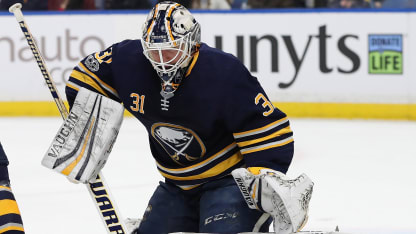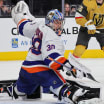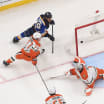"There are a lot of people outside looking in," Lehner said of judging strictly by statistics. "Your job is not to look out. The biggest part is not caring at all about what other people think. It's just a part of the reality of being a goalie. You are a part of a certain set of circumstances and you have to do the best with it. Some years you are part of good circumstances and you can make them better, and some years you are part of circumstance that are just a little harder and you've still got to try to do the same things, deal with it, wake up every day and try to get better."
Measuring the circumstances that affect goaltenders is part of what makes it hard to judge by top-line statistics alone.
Beyond save percentage and goals-against average, some analysts compare actual performance to expected save percentage based on the types of shots a goaltender is facing, including shot type, distance, angle and if it came off the rush. Others track even more information, including preshot passing plays and how much a goalie is forced to move before making a save.
The increase in information adds valuable layers of context to goaltending analysis, but none of the advanced stats completely account for the read a goalie makes on a play and whether it was the proper one, or, perhaps, if there was a mistake made by the defenders in front of him.
It's hard to judge expected goals, Johnson said, if you don't know what the goalie expected.
"They can't measure reads and what the D is supposed to do and if that happened or didn't and how it affected how you played it," Johnson said. "For me, there's still not enough context."
Beyond managing outside perceptions, goaltenders often need to filter results while playing a position where three bad bounces across three or four games can be the difference between a .920 save percentage and an .890.


















